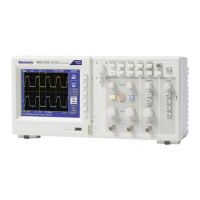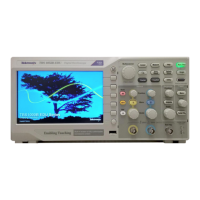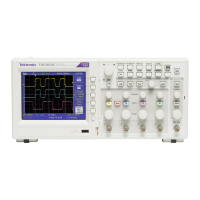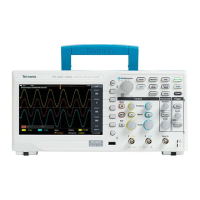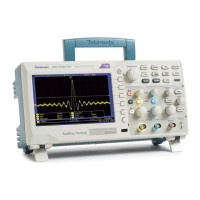1. A solid waveform indicates a channel (live) waveform display. The
waveform remains solid when the acquisition is stopped if no controls are
changed that make the display accuracy uncertain.
Changing the vertical and horizontal controls is allowed on stopped
acquisitions.
2. Reference waveforms appear white and waveforms with persistence applied
appear in the same color as the Main waveform, but with less intensity.
3. A broken line indicates the waveform display no longer matches the controls.
This happens when you stop the acquisition, and change a control setting that
the oscilloscope is not able to apply to the displayed waveform. For example,
changing the trigger controls on a stopped acquisition causes a broken-line
waveform.
Key points
Persistence. The oscilloscope displays persistence waveform data with less
intensity than "live" waveform data. With Persistence set to Infinite, record points
accumulate until a control is changed.
Option Comments
Off Removes default or old waveforms whenever new waveforms display
Time limit Displays new waveforms at normal intensity and old waveforms at a
lower intensity; erases old waveforms when they reach the time limit
Infinite Older waveforms become less bright but always remain visible; use
Infinite persistence to look for infrequent events and to measure long
term peak-to-peak noise
XY Format. Use the XY format to analyze phase differences, such as those
represented by Lissajous patterns. The format plots the voltage on channel
1 against the voltage on channel 2, where channel 1 is the horizontal axis and
channel 2 is the vertical axis. The oscilloscope uses the untriggered Sample
acquisition mode and displays data as dots. The sampling rate is fixed at 1 MS/s.
NOTE. The oscilloscope can capture a waveform in normal YT mode at any
sampling rate. You can view the same waveform in XY mode. To do so, stop the
acquisition and change the display format to XY.
Reference
86 TBS1000B and TBS1000B-EDU Series Oscilloscopes User Manual
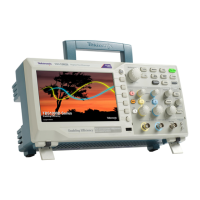
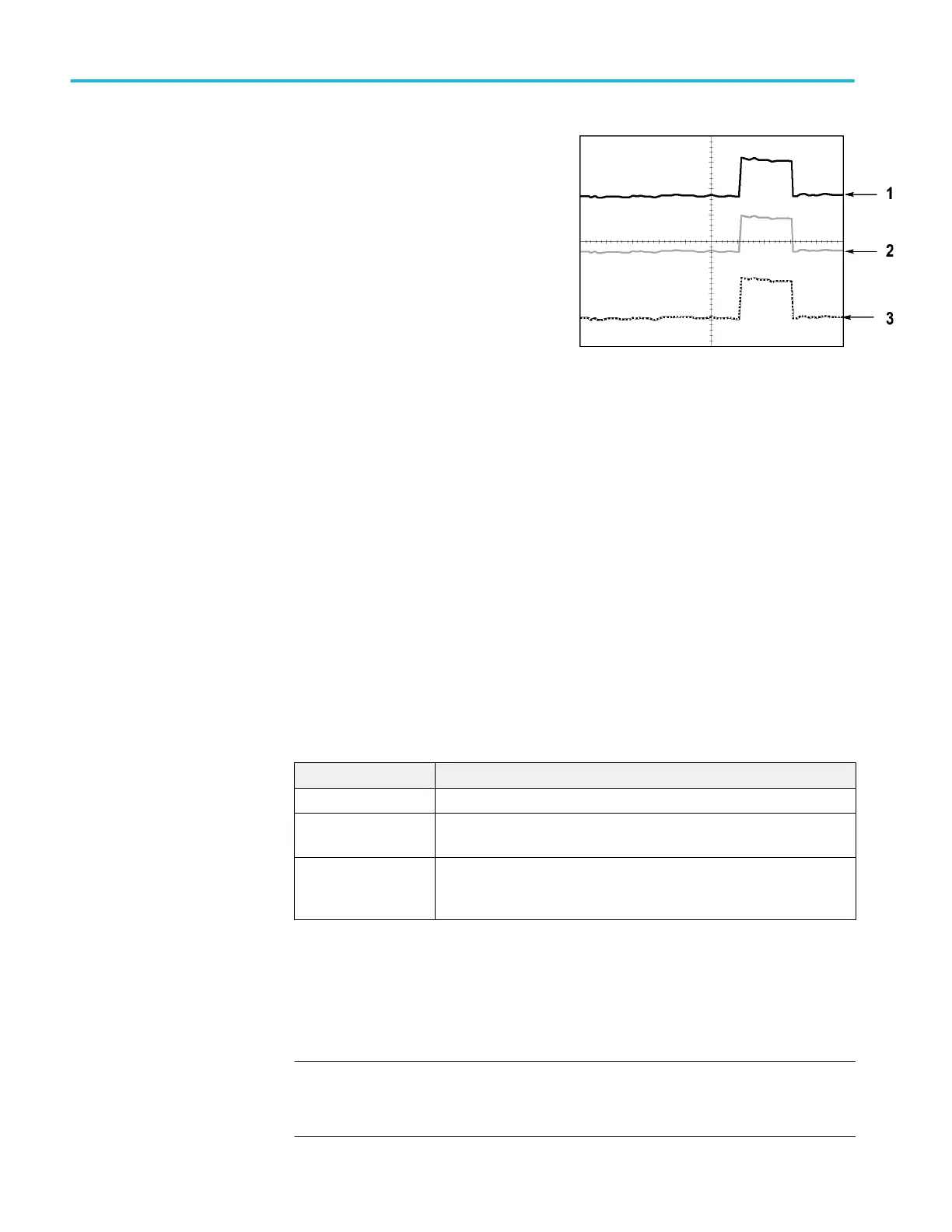